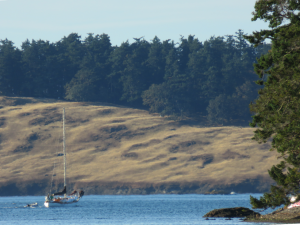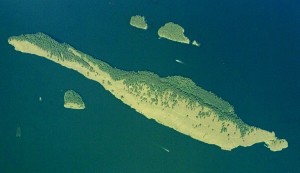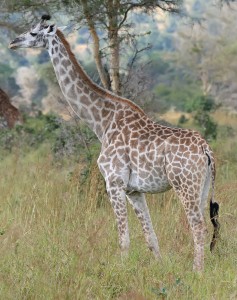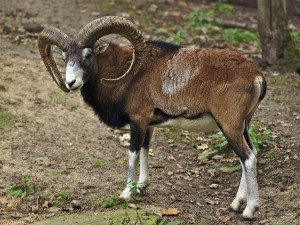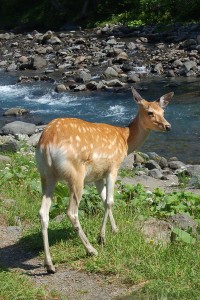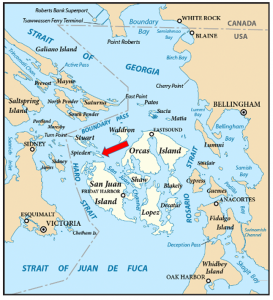Exotic big game animals and birds in the American San Juan Islands of Washington State? Visitors passing Spieden Island on a Washington State ferry on their way to Sidney, British Columbia, Canada from Anacortes or travelling by private boat are often stunned to see Mouflon sheep from Corsica, Fallow deer from Europe, and Sika deer from Asia grazing on its grassy slopes. Due to the rain shadow created by the Olympic Mountains, the island is dry on its southern side and wooded on its northern slopes.
Spieden Island’s climate sets it apart from the rest of the San Juan Islands. In the aerial photo below, The Nature Conservancy’s Sentinel Island (south) and the Cactus Islands (north) are privately owned. Adjacent rocks and reefs are part of the San Juan Islands National Wildlife Refuge.
Photo courtesy of the Washington State Dept. of Ecology
Sentinel Island was the final island in the archipelago to be homesteaded in 1919 by Farrar and June Burn. Living High is her autobiography about their experience.
Photo courtesy of www.amazon.com
Spieden Island became a hunting preserve for a short time in the 1960s when two taxidermist brothers purchased the island, imported several species of exotic animals and birds from around the world, and invited hunters to fly in and pay for the privilege of hunting them. Lions, tigers, giraffes, rhinos, and monkeys—to name a few—were stuffed and shipped home as trophies.
Photo courtesy of Wikimedia Commons
Several celebrities, including John Wayne, are said to have hunted on the island. It’s possible. I know he had kept a boat in the Roche Harbor Marina, stayed at the adjacent Hotel de Haro, and bequeathed land near Sequim on the Olympic Peninsula to build John Wayne Marina.
Regardless, local outrage caught the attention of Walter Cronkite, a TV newsman, who produced a nationally-televised program that ultimately forced the brothers out of business for their inhumane treatment of the animals. There was additional concern that shots fired might hit residents on nearby San Juan Island.
“There wasn’t much sport in chasing trapped animals in a van and gunning them down,” says Dave Ceccarelli, the former Washington state representative who helped initiate legislation that shut down the shooting preserve.” (The Seattle Times, June 19, 1994)
Below are two photos of the animals who live on Spieden Island today.
Moulflon sheep of Corscia (Photo courtesy of Wikimedia Commons)
Sika deer of Asia (Photo courtesy of Wikimedia Commons)
Another endeavor, the Island Institute, was established by Jane Howard in 1990 to transform Spieden Island into a marine conservationist center. The former science teacher, who designed field studies for Seattle’s Pacific Science Center, leased the island for several years. Students participated in activities like hiking, kayaking, scuba diving, and snorkeling. They studied subjects like tide pools, tides and currents, navigation, astronomy, geology, and Native American history. And they slept in the safari-style tents on wooden platforms left by the hunters.
Today, Spieden Island, is owned by James Jannard, the founder of Oakley sunglasses and RED Digital Cinema. He purchased the island in 1997 for $22 million dollars. And it is private! Unless flying overhead, all that can be seen are a shed and boat dock in a nook on the southeast corner of this fascinating island.
One of our favorite pastimes is to let the current sweep us in our inflatable dinghy along the grassy shore, waiting for a glimpse of the exotic creatures.
Thank you for reading!
Blessings,
Deb

